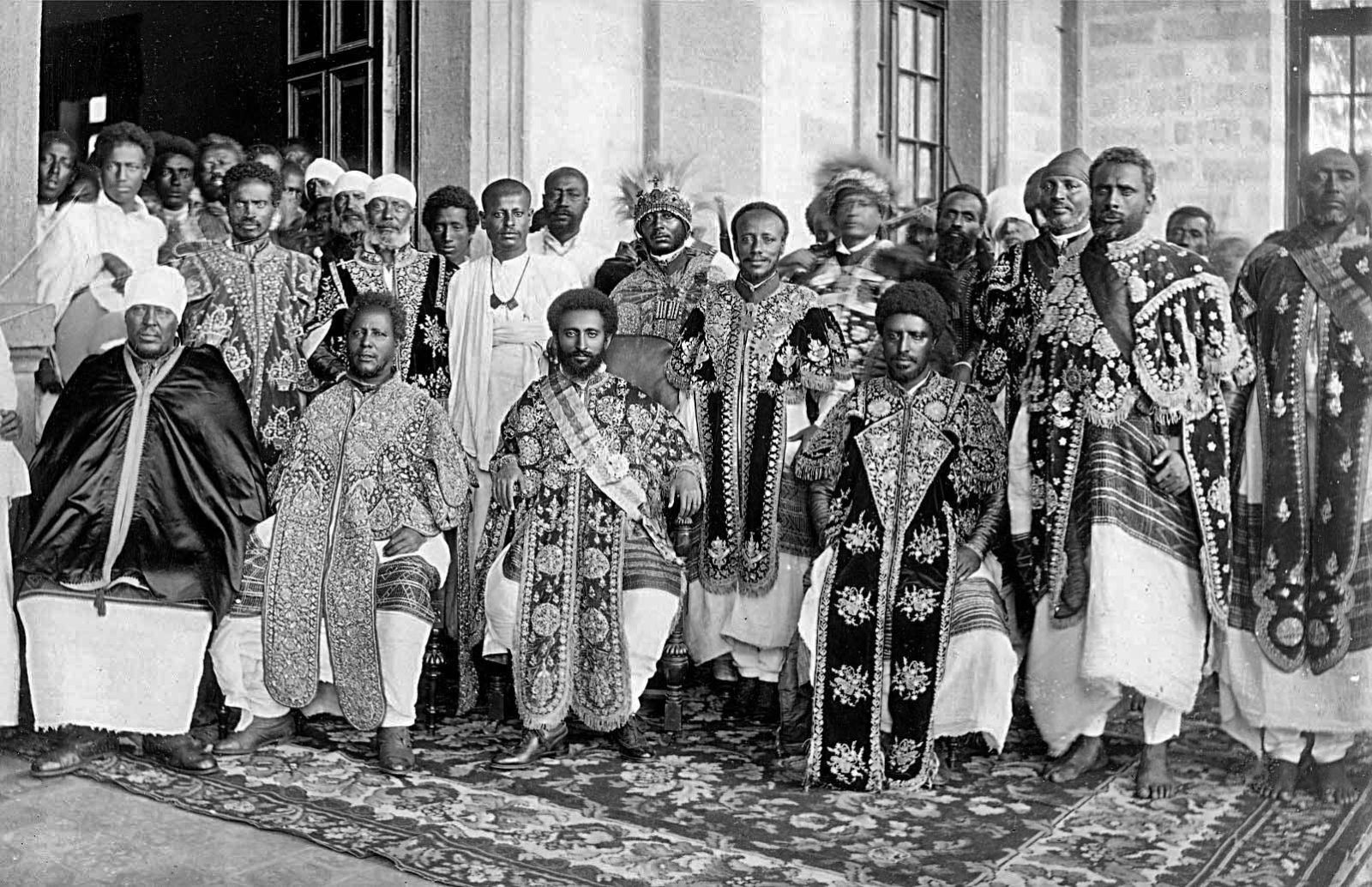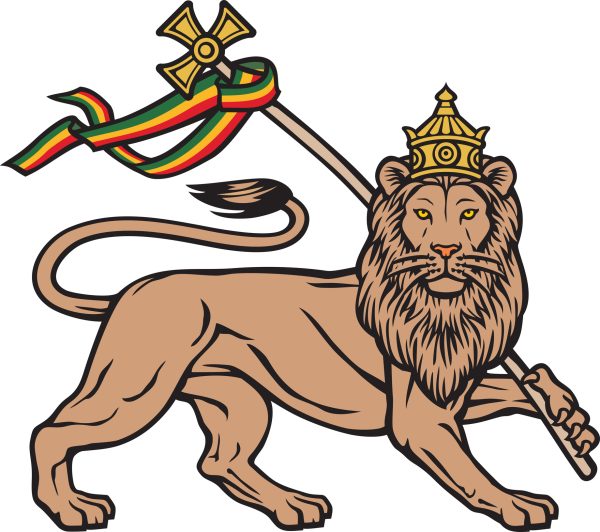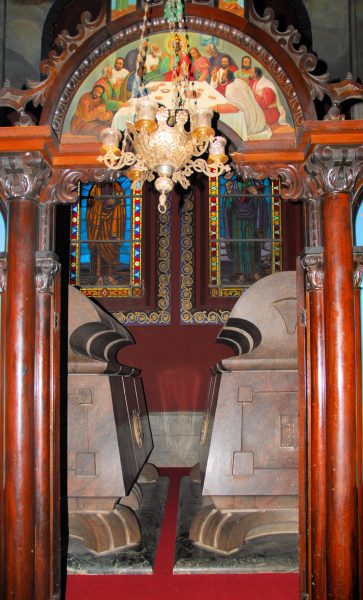The Lion of Judah: Haile Selassie I

|
Getting your Trinity Audio player ready... |
When someone mentions an all-powerful leader, what picture comes to mind? Do you think of grand buildings with high walls, such as those ancient Timbuktu or modern-day Buckingham Palace? Or majestic pyramids like the grand one at Giza, so great that we mere mortals cannot conceive their construction.
How about a king from a little-known part of the Horn of Africa? A giant arising from this little-known place, rising so grand, exploring unchartered waters, facing other giants, and emerging victorious. An influential leader referred to as the ‘King of Kings,’ sometimes as the Lion of Judah. A man who managed to tame lions and have them move freely around his home as pets. A man some believed was a God of some sort. This man was Ethiopia’s 225th and last emperor, Haile Selassie.
The Man Behind the Name
Haile Selassie I was born Lij Tafari Makonnen in 1892 in Harar, Ethiopia. His father, Sahle Selassie, was an adviser in the emperor’s court.
Ethiopia, formerly known as Abyssinia, is located in East Africa on the ‘Horn of Africa.’
When Tafari’s parents died, Emperor Manelik II, his father’s cousin, raised him. Tafari Makonnen received a good education and, demonstrating acute intellect beyond the book, became a governor at 14.
When Manelik II died, he was succeeded by his grandson, Lij Yasu. A devout Muslim in a staunch Christian nation, he didn’t have much support from the people. Lij Yasu was overthrown due to suspicions that he might attempt to bring Muslim rule. Manelik II’s daughter, Zauditu, became ruler.
The crowning of Zauditu placed Tafari next in line to the throne as he was appointed regent. By this time (1917), he was 24 years old. Clashing views on which direction Ethiopia should take towards progression caused tension between Empress Zauditu and her regent Tafari. A coup to oust Tafari in 1928 proved useless, and after a series of events, Zauditu died two years later.
In November 1930, Tafari Makonnen ascended to the Ethiopian throne. He changed his name to Haile Selassie, meaning the might of the Trinity. He would also be known as the ‘King of Kings’ and “The Lion of Judah.”

His coronation drew worldwide acclaim. No expenses were spared, with the budget estimated at around $3 million. A procession for a king was set up, sparing nothing to impress dignitaries from all corners of the world.
Royalty and others donned their best attire, whether Western Sunday best or traditional African dress accessorized with lion manes. The New York Times covered the majestic coronation. Haile Selassie would build an equally grand king’s palace as the new Emperor.
Haile Selassie’s tenure marked rapid improvements that spread across many sectors of the country. He sought to improve the economy and modernize the country on his terms. More than an astute statesman, Selassie was a man of the people, accessible to his subjects.
He is said to have maintained good relationships with the elites while uplifting commoners by educating them and creating jobs. He traveled well and cultivated good relationships with other world leaders, including JF Kennedy and Winston Churchill. Haile is known for sending help to South Korea during the Korean War. This progressive African leader fascinated a lot of other world leaders, and they followed his life and times closely.
There was a period when the church significantly impacted political leaders and believed that only God could approve a leader. Selassie was believed to be a man ordained by God.
To top this off, he was a direct descendant of King Solomon and lived as a devout Christian. His astounding rule and ancestral Solomonic lineage gained him a special honor with some Jamaicans. They believed that Emperor Haile Selassie was a messenger of God, someone worth worship. This was the beginning of the Rastafarian religion.
Bob Marley or Reggae music lyrics mention Haile Selassie as a redeemer walking amongst them on 21 April 1966. This day remains holy to the Rastafarians.

Significant Changes
Haile Selassie was at the forefront of modernizing Africa. One of the first things he did to make way for change was to amend the country’s constitution. Haile ended the feudal tax system and helped found the Bank of Ethiopia, only one of many of his developments. He also began the process of abolishing slavery, an effort that would take a long but eventually come to fruition.
Emperor Selassie made considerable transformations to the education system to make all his advancements possible. He built schools and gradually uplifted commoners by equipping them with education and practical skills, effectively advancing the country. Emperor Salassie also commissioned modern roads, hospitals, factories, and warehouses in a massive construction boom.
He built hotels, cinemas, restaurants, and bars to balance entertainment and leisure facilities for his people. All these acts would not only modernize and urbanize Ethiopia, mainly its capital, Addis Ababa. They would also see the country grow into an attraction for visitors worldwide.
Knowing that countries need others to prosper, he fostered diplomatic relationships with some of the world’s major players. Haile unprecedentedly made Ethiopia the first African country to join the League of Nations. Later, in 1963 he founded the African Union, which has Addis Ababa as its capital even today.
As a leader on the world stage, Haile Selassie preserved certain customs and traditions, supporting and remaining loyal to the church. This winning formula made him popular with his subjects.
The Woman Behind the Successful Man: Queen Menen Asfaw
Born of royalty herself, Hale Selassie’s wife was the granddaughter of one of Ethiopia’s kings. A woman highly devoted to the empire without meddling too much in politics, Haile Selassie’s wife, Menen Asfaw, is credited for her supportive role during her husband’s reign. Crowned the Empress of Ethiopia, she was her husband’s advisor and very active in progressing her country.

Empress Menen Asfaw was known to be very generous in service and tangible things. She donated large amounts to charity, improving the lives of the poor and the sick. Her work with the Red Cross was a notable extension of her generosity. She advocated for women’s rights, and in proactively empowering them, she opened the first school for girls in Addis Ababa.
Empress Menen Asfaw married Emperor Selassie for fifty years until their death, and they had six children together. Like her husband, the Empress was revered as the mother of Ethiopia and is well loved and respected in the Rastafarian movement. She was proactive, served her subjects dutifully, and stood by her emperor husband when his throne was threatened by exile and later a coup.
Setting a Precedent: The Aksum (Axum) Empire
Haile Selassie’s 20th-century remarkable Ethiopia may have been a case of history repeating itself, for on the same lands, centuries before, existed another wonder: the Aksum empire.
Persian prophet Mani described Aksum as one of the world’s greatest kingdoms, along with China, Persia, and Greece.
The Aksum empire comprised parts of countries we know today as Eritrea, Sudan, Somalia, and Ethiopia. The capital itself was called Aksum.

Centuries before becoming known as Ethiopia, there was a thriving empire known as the Aksum empire, sometimes referred to as the Axum and Aksumite empires. Although the dates of its origins have yet to be established, the Aksum empire’s magnitude became notable in the first century AD.
This empire was an economic powerhouse, thriving primarily on agriculture and trade. Enjoying its existence in a strategic location, the Aksum empire catered as a corridor between the Western world and the Arab world, with access to different African countries. Its trade influence spread to Egypt, India, Sri Lanka, Greece, Rome, and China. The empire had regular deposits of iron and gold. These sought-after commodities were the commodities they traded in most, along with ivory they obtained by traveling into the interior of Africa. In exchange, the country would buy ammunition, textiles, and glassware from other countries.
To strengthen their trade, the Aksumites developed modes of transport that were advanced at the time, developing road networks, arranging camel caravans, and inventing their own types of ships. As their trade grew, they progressed in their technology as well. To facilitate their ongoing exchange, the Aksumites were pioneers in the invention of money, minting the first coins.
The Aksum empire is arguably the home of Christianity as it was one of the first countries to make Christianity a state religion. Their emperor, Ezena I, converted to Christianity, and his people followed suit. The king held much influence and unlimited power over the people, often called Negusa Nagasta, which translates to the king of kings, a title that Haile Selassie would also use.
Before converting to Christianity, the Aksumites practiced polytheistic religions. Among their many gods were Mahrun, God of War; Dhat Hammam, God of the sun; and Beher and Meher, Gods of the underworld. They also worshipped their ancestors, routinely offering animal sacrifices. The worship of ancestors and other gods makes their issue of religion contentious, as it is also believed that the Ethiopians and Aksumites are direct descendants of the biblical King Solomon.
One of its early leaders, Manelik I, is said to have been the son of King Solomon with Queen Sheba. After conversion, the Ethiopians became a firm Christian nation. Besides its connection to biblical characters, the Ark of the Covenant is also believed to be housed in Aksum.
The Ark of the Covenant is said to have contained the tablet on which the Ten Commandments were written by Moses as given by God, a big deal to Christians and other religions. Possibly based on the former, Ethiopia is home to the oldest bible, inscribed around the 5th century BC on goat’s skin. This bible, believed to be the original, contains scripts not found in the standard bible.
A thriving metropolis oozing commercial intelligence, with citizens who developed astounding architecture and advanced Christianity, the Aksum empire shined well into the 8th century BC. It is believed that the fall of the Aksum empire was due to extreme climatic changes. Other historians believe the empire fell when attacked by a female warlord known as Judith and possibly the arrival of Arab traders.
Heavy is the Head that Wears the Crown: Disruption in Power
As much as Haile Selassie was a well-loved leader whose country never got colonized, he was not exempt from problems that often affected those in a position like his. One of his biggest problems was the Italian invasion of his country in 1936. This grisly war would see the Italians attack Emperor Selassie’s hometown of Harar while destroying one of the oldest mosques in the world, a bitter pill to swallow for the religious nation.
With Germany arming the Ethiopian army and evident that the League of Nations didn’t have much power to stop the war, this Italian-Ethiopian war was, in a way, a precursor to World War II, the League of Nations failed to help Ethiopia even after a heartfelt appeal from Emperor Selassie, taking little action but placing an embargo on Italy which didn’t affect the country much, regardless.
During the war, Emperor Selassie went into exile in Bath, England. During his stay in England, Selassie constantly suffered ill health as his body struggled to adjust to the European weather conditions.

Additionally, some would label him as a traitor and a coward for abandoning his country while his army fought against Mussolini’s Italians. On the bright side, during his stay in England, he developed relations and earned favor with the British, a country that fought on the opposite side of Italy when the Second World War broke out.
The British would help him in 1940, and Ethiopia would emerge victorious, occupied temporarily by Italians but never losing total control of their land and never becoming a colony. Emperor Selassie would return from exile in 1941 and occupy his leadership role again.
Emperor Selassie’s glorious 44-year rule would crumble as his country’s growth stagnated in the 1970s. Ethiopia became riddled with famine, unemployment was rife, and the ordinary people lived in abject poverty while the elites maintained their lavish lifestyles.
With minimal prospects for the future, some of his people began to lose faith in him and, in coup d’etat fashion, pushed Selassie out of power. He lost control in 1974 at the hands of Mengistu Haile Mariam, a military leader and rebel party known as the Derg. Under military rule and house arrest, the mighty king of kings became insignificant, and elites who had been close to him were punished, jailed, tortured, or killed.
Still under house arrest, Emperor Haile Selassie would die a year later (1975), aged 83. The military leading the coup said he had died of natural causes, but wide speculation refutes this, believing that the emperor had been murdered instead. The end of Selassie’s rule also marked the end of 3000 years of monarchy rule over eight dynasties.

Selassie may have been murdered, but his legacy lives on. His legacy is widely known in Africa through stories and the world through many forms of documentation, books, news articles, videos, and photos. To the Rastafarians, he didn’t die but disappeared to some world due to supernatural power. They carry on his legacy, too, through their song’s story and lyrics—mostly reggae music.
A statue of the emperor was unveiled at the headquarters of the African Union in 2019, which pleased many and offended some. Those who were offended believed that the emperor didn’t deserve this honor because he was not the great leader the world always portrayed him as. Locating that proverbial needle in the haystack would be easier than finding any formidable leader who has never attracted controversy.
In Ending
The wealth and grandeur of the Aksum empire cannot be seen today. What remains of it are obelisks and castle ruins preserved by UNESCO. Ethiopia itself is not as dirt poor as some media may portray it. Still, in a world with megacities, it doesn’t reflect the modernization dream and Emperor Selassie’s life’s work. It stands as a lesson to leaders and commoners that one day, you could be at the pinnacle, and another, you could be unseen or unheard.
As mere mortals without abilities to correct history, valuable lessons can be learned to avoid repeating some costly mistakes, mistakes that no nations can say that they are exempt from, for in the words of Emperor Haile Selassie himself, “It is us today, tomorrow it will be you.”












